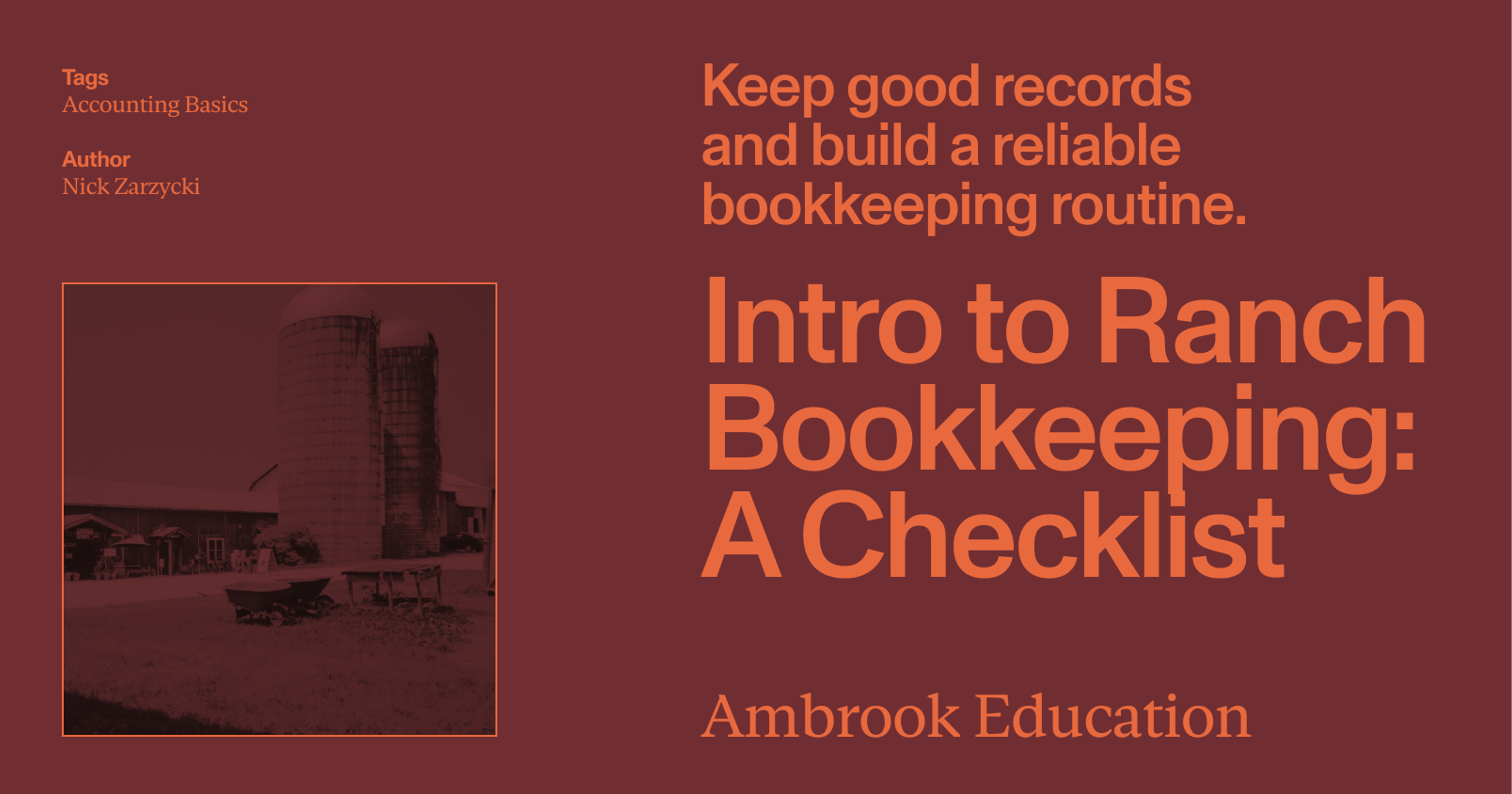Set your livestock operation up for success with organized records and a reliable bookkeeping routine.
Keeping good records is important no matter what line of business you’re in, but it’s especially important in ranching, where high seasonality, volatile prices and interest rates, shifting government policies, changes in the weather, and countless other factors can create uncertainty around income and profitability.
Reliable recordkeeping can help cut down on that uncertainty, improve herd management and productivity, and let you approach big financial decisions with confidence. Here are some steps you can take as a beginning rancher to set your bookkeeping operation up for success.
1. Formalize the business
Register your business with your state and get an employer identification number (EIN) from the IRS. Open a separate checking account for the business and get a separate credit card for your business (or a dedicated business spending card like the Ambrook card) and avoid using it for anything that isn’t farm-related.
Ask your accountant about the benefits of forming a partnership, C-corp or LLC, and whether your farm would benefit from S corporation status. While you’ve got their ear, ask them about the benefits of getting set up with accrual accounting vs. sticking to cash accounting.
Read more: Understanding Accounting Methods: Cash vs Accrual Basis
2. Choose the right bookkeeping tools
We recommend choosing a bookkeeping tool purpose-built for agriculture like Ambrook, one that makes it easy to import and reconcile your bank information, tag bills, invoices and other transactions intuitively, support Schedule F categories, and build a chart of accounts that grows with your business.
Your system will also need to track and manage livestock inventory with a stock flow plan, track equipment and depreciation, and maintain inventory of feed, supplies, and tools.
Read more: Tracking & Valuing Breeding Stock
Accounting built for American ag.
3. Track all income and expenses
The categories you set up in your chart of accounts should capture all sources of income, including livestock sales, breeding fees, land lease income, custom grazing, and program funding.
They should also capture all expenses, including vehicle, equipment and maintenance costs, day-to-day expenses like supplies, fertilizer, feed and fuel, and overhead costs like veterinary fees, utilities, labor and insurance. Consider keeping mileage logs to make your vehicle expenses easier to deduct, and a petty cash account to keep tabs on small expenses.
In addition to making journal entries to log income and expenses, make sure to save and organize receipts and invoices, and create digital copies of them if possible. Depending on the size of your operation, you might also need a payroll system to track hours and wages and handle tax withholding and reporting.
Read more: Livestock Accounting 101
4. Develop a solid month-end routine
Set aside time at the end of every month to go over your petty cash logs and receipts, post and transactions that aren’t in the system yet, take care of outstanding bills, follow up on unpaid invoices, and reconcile your bank statements.
This is also usually a good time to review your income statement, cash flow, balance sheet and other reports, take stock of the operation’s performance, and plan for the future.
Read more: Managerial Financial Statements
5. Get your tax prep done ahead of time
Farmers are entitled to a slew of tax benefits, but the rules and forms involved in filing for them can also get complicated.
Stay on top of IRS deadlines and estimated tax payments to avoid penalties, keep detailed records to maximize your deductible expenses, and tag transactions in your books using Schedule F categories to save yourself and your accountant time during tax season.
Read more: Which Tax Forms are Farms Required to Submit?
6. Hire a bookkeeper, accountant or tax preparer you trust
A good bookkeeper or accountant can be a valuable partner, helping you set up your books in a way that makes sense for your business, stay current on tax laws and funding opportunities, and plan for the future.
Look for someone who’s worked with other farmers with similar acreages and revenues to your own, and ask farmers you know personally for recommendations. Keep in mind that many accountants bill by the hour, which means investing in good recordkeeping ahead of time can save you money.
Move beyond spreadsheet accounting with Ambrook
At Ambrook we believe one of the most important and difficult challenges for producers is identifying the true cost of production, and that your accounting system should be able to help you do so accurately and reliably.
Ambrook’s easy-to-use workflows help you build habits around bookkeeping and accounting, ensuring your financial data is always ready to answer your most pressing operational questions. With automatically-generated financial statements, income and expense tracking, effortless tax time prep and other features custom-built for agriculture, Ambrook helps you make better business decisions and get peace of mind. Curious to learn more? Schedule a demo today.
Want to learn more about Ambrook?






